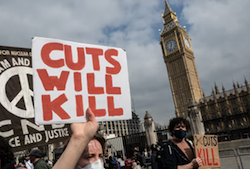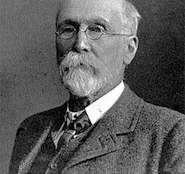The Good Friday Agreement has been described as “Sunningdale for slow learners”, reports PAUL DIXON. So how have the Republican leaders managed to sell it to their supporters?
The peace process is back on track but still precariously balanced. The Good Friday Agreement is far from safe and probably won’t be for the next few years. The IRA have agreed to put some weapons ‘beyond use’ and the first inspection of arms dumps has already taken place. For many unionists this is not decommissioning and the weapons are there to be brought out again when the peace process fails to produce further gains for republicanism. By contrast, dissident republicans (of the violent and non-violent variety) claim that this latest move is proof that the IRA have lost the war and surrendered.
Both republican and unionist leaders are settling for more or less what was on offer at Sunningdale 25 years ago. Seamus Mallon of the SDLP has called the peace process, “Sunningdale for slow-learners”. So how has the Sinn Fein leadership managed to sell the peace process?
There is a group of republican dissidents who, while opposing the return to armed struggle, are highly critical of the Sinn Fein leaders. They cluster around Fourthwrite: The Journal of the Irish Republican Writers Group which provides a platform for debates within republicanism. These republicans argue that the Sinn Fein leaders should admit that the IRA has failed to achieve its ideological objectives and therefore has lost the war.
Echoing Seamus Mallon, some are bitter at the leadership for all the people who were sent out to kill and be killed for something that was on offer in 1973. What did all these people die for? Why didn’t the leadership read the script in 1973 and end the violence then? The struggle has been abandoned and only a few Sinn Fein politicians have benefited while most republicans, along with their social radicalism, have been left behind.
These republican dissidents criticise the Sinn Fein leaders for their lying and manipulation and call on them to be honest about the defeat of the IRA. They protest at the iron grip that the leadership has over the republican movement and the lack of debate. They claim the leadership has used its power to manipulate and deceive the republican movement, saying one thing to people outside and another internally.
Tommy McKearney, a former member of the IRA and a hunger striker, argued that the IRA’s statement on 6 May this year, proclaiming it had “completely and verifiably put IRA arms beyond use”, signalled to the external world that the IRA was being wound up. Yet, he says, “This is not what the organisation will tells its members, of course. Provo staff officers will now tour the country, meeting the troops and explaining to them what the statement means, or more accurately perhaps, what they want them to believe that it means… It may be some time before the reality of the situation dawns on the Provos’ ever trusting, ever credulous membership.”
Inoculation
Ciara Ni Tuama criticised the way in which the Sinn Fein leaders garnered support for the peace process, using the last five years to wean people off their memories of loss and of living with armed struggle.
“It has been a process of inoculation, conducted through a choreographed ballet of leaks and denials. Sinn Fein has always been famous for its doublespeak; it used to be the British and unionists who complained loudly about their deftness with words… Few Republicans thought the day would come when it would be republicans themselves at the receiving end of that doublespeak.” Similarly, Brendan Hughes laments that the “political process has created a class of professional liars and, unfortunately, it contains many republicans”.
How could the Sinn Fein leadership defend itself against the republican dissidents?
First, the leadership’s failure to settle for Sunningdale in 1973 is understandable (if not excusable) because there was a widespread belief among republicans and nationalists that they were winning. They believed that the tide of anti-imperialist history was with them and that the British were preparing to withdraw. This belief helped to inspire the IRA ceasefire of 1975/76. It was only after this failed that the IRA settled down for the ‘long war’ and established closer central control of the organisation.
Secondly, you cannot judge the success of the republican movement against its ideological aspirations. Such aspirations – particularly in time of ‘war’ – are often maximalist, designed to encourage people to fight and sustain the struggle against the ‘enemy’. Complete victory and vindication is promised in order to fortify the movement and undermine the will of the enemy to resist.
The republican movement’s success is more appropriately judged against a ‘realistic’ assessment of what is politically possible. In this sense both David Trimble and Gerry Adams can be judged successful in ending a stalemated ‘war’ which was hurting all sides and was never likely to result in either side’s complete victory. The Sinn Fein leadership claims victory to maximise its ability to deliver a united republican movement to a settlement.
Thirdly, could the republican leadership (or a faction of it) have persuaded the republican movement to enter a peace process at any time before 1994? During the IRA ceasefire of 1975/76 the leaders had considerable problems in enforcing the policy and controlling dissidents. The recovery of the IRA in the late 1970s, and the electoral gains made by Sinn Fein in the early to mid-1980s, may have renewed hope that the British could be defeated. In the late 1980s an attempt was made to escalate the military campaign and “sicken the Brits” into withdrawing. The failure of this tactic may have given impetus to those who were exploring an alternative, unarmed strategy for the republican movement.
Deep impression
There is some evidence that the Anglo-Irish Agreement of 1985 made a deep impression on a faction of the Sinn Fein leadership. The strength of unionist resistance to the Agreement, and Thatcher’s determination to stand up to unionism, suggested once again (as had the Ulster workers’ council strike in 1974) that unionists were not the dupes of British imperialism that republican dogma had suggested.
Just suppose, for a moment, that by 1985 Adams and Martin McGuinness had finally realised that the primary obstacle to Irish unity was not British imperialism but the approximately one million unionists who would fight (probably with a considerable degree of success) to stay out of a united Ireland. Suppose they also realised that the IRA’s struggle against the British government was at a stalemate, that lives were being lost on both sides with no prospect of anything that could be called success.
In this case, how do Adams and McGuinness persuade the republican movement, whose expectations have been fed by 16 years of propaganda war, and their suffering in the real war, to settle for, more or less, what was on offer in 1973? How do you persuade them that the sacrifice and the suffering was worth it?
Republican dissidents might argue that you tell the republican movement ‘the truth’ and persuade them to support a new, unarmed strategy. But how realistic is it to expect that such a strategy to succeed in simply turning republican opinion around? Wouldn’t a sudden about turn be seen as surrendering and provoke allegations of treachery for demoralising republicanism and undermining the ‘war effort’ in the face of the enemy?
Republican dissidents and anti-Agreement unionists have justifiably attacked the pro-Agreement parties for employing deceit and manipulation. Such secrecy and deception undermines the accountability of politicians and democratic debate. The choreography and lies of the peace process has led to increased public cynicism as the various ruses and manipulations have been revealed to the public. You can fool some of the people some of the time…
The lack of democracy, accountability and openness has resulted in a political atmosphere of distrust and resentment in which it is argued that only manipulation can produce an historic accommodation. A more open, democratic debate might lead to a peace process which is popularly reinforced rather than balanced precariously on still seething reservoirs of communal hatred.
Doubtless, pro-agreement republicans would justify their behaviour on the grounds that ‘the ends justify the means’. Telling ‘the truth’ is unlikely to meet with a positive response from a population which is so strongly rooted to conflicting ideologies.
Given the polarised ideological environment of the late 1980s and early 1990s, it is not surprising that republican leaders thought a sudden about turn on key ideological issues would be difficult to sell and could seriously divide republicans. The janus-faced manner in which the Sinn Fein leaders have managed the movement’s entry into the democratic process is not without precedent in the republican movement. A comparably artful approach was taken by the anti-Treaty IRA’s entry into democratic politics in the 1920s.
You don’t have to be a republican to appreciate the strategic dilemmas facing the Sinn Fein leadership. To maximise the chances of the Good Friday Agreement succeeding, an appreciation of the constraints operating on all (unionist and nationalist) pro-Agreement parties is necessary. As Adams argued: “Peace-making… is different from, and it is more difficult than, conventional politics. It means trying to put yourself in the shoes of your opponents.”
Paul Dixon is Senior Lecturer in Politics & International Studies at KIngston University, London. He is author of Northern Ireland: The Politics of War and Peace (Macmillan, 2001).



22 October 2010
[…] Watch David Connolly ponders the latest example of new Labour style democracy Republicans and the choreography of peace Paul Dixon wonders how the Republican leaders have sold the Good Friday Agreement. For Queen and […]